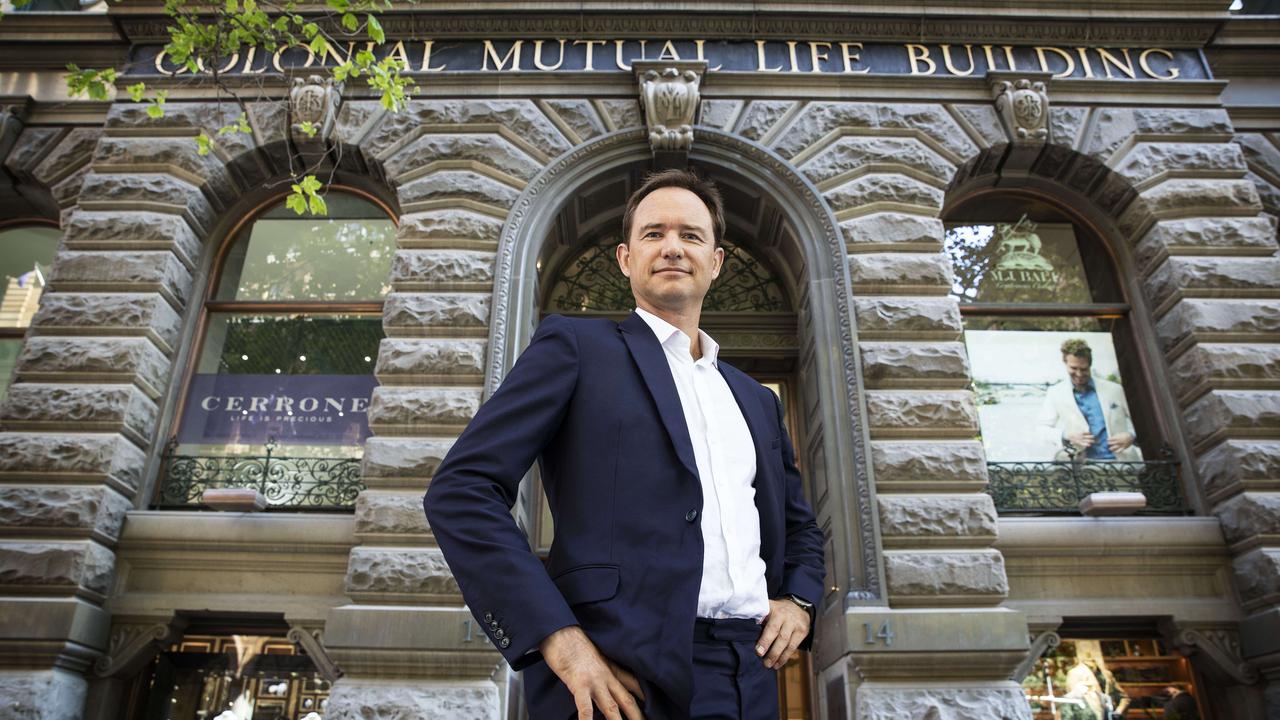Shayne Elliott needs one more to complete ANZ’s management team
New ANZ Bank chief Shayne Elliott is one appointment away from finalising his senior management team.

After a flurry of activity, new ANZ Bank chief Shayne Elliott is one appointment away from finalising his senior management team, after which the real game of optimising returns begins in earnest.
The overhaul of the wealth division, leading to the departure of its head, Joyce Phillips, means ANZ has ditched the stand-alone structure favoured by its peers and designed to minimise the cultural tension with banking.
Elliott is taking a different course for a variety of reasons.
By folding wealth products and services into the retail and commercial businesses, he reckons he can reduce complexity, become more focused on the customer and lift returns and capital efficiency.
The restructure recognises that wealth is a much smaller business for ANZ than its big four rivals, absorbing only 10 per cent of group capital compared to institutional and Asia Pacific (40 per cent) and commercial and retail (40 per cent), and that it’s heavily weighted to life insurance.
It anticipates that regulatory capital intensity for wealth businesses will only increase.
Elliott hoses down suggestions that he’s motivated by the potential for cost savings and a reduced headcount, although that must be a consideration given the size of the infrastructure required to support Phillips’s stand-alone operation.
The truth is that the major banks’ wealth businesses have been a protected species, despite failing to meet the lofty cross-selling projections that justified a $20 billion combined purchase price.
Also, it doesn’t make much sense from ANZ’s perspective to have financial planners working in a branch who are part of a different reporting structure.
That’s why financial planning will become part of retail distribution, reporting to Catriona Noble, with the product manufacturing business, to be known as Australia Wealth, becoming part of insurance boss Alexis George’s empire.
The remaining role to be filled, possibly before the end of the month, is chief financial officer.
The leading internal candidates are deputy group CFO Shane Buggle, New Zealand CFO Antonia Watson and institutional bank CFO Mary Macleod.
Avoka shoots for stars
Australian-born but Colorado-based Avoka, with its turbocharged online customer acquisition platform, is in a similar phase of its development to PromisePay, which was profiled last week and is seeking $30m-$40m to take its payments platform for online marketplaces global.
Talk of a deflating fintech bubble is a bit lost on such companies with their established revenue streams and global prospects.
Avoka was founded by Australian start-up veteran Phil Copeland, who is in the market for $15m-$20m to expand the company’s geographic footprint.
In the longer term, Copeland also sees no reason why the government, healthcare and education sectors should be excluded from the same benefits enjoyed by Avoka’s financial services customers.
“We want to be a $1 billion (market cap) company by 2020, or thereabouts,” Copeland says.
“You have to aim high. You’ve got to shoot for the stars.”
Avoka has already captured the attention of legendary Australian venture capital investor Roger Allen, who is now in semi-retirement after running his Allen & Buckeridge VC fund.
Allen has a small investment, with Copeland and his co-founder the majority owners.
Unusually, the company has been mostly self-funded to a point where its annual revenue exceeds $16m — half in product subscription revenue and the remainder from implementation and training services.
Like PromisePay, Avoka has been flooded with funding offers.
A US private equity fund that provides growth capital kicked Avoka’s tyres last week, told Copeland they loved the technology and invited him to come back later when he’d grown a bit.
The fund’s minimum investment is $US50m. More to the point, the co-founder wants a spread of Avoka investors, not just from the US.
Copeland is currently in discussions with Australian family offices and other local institutions prepared to invest patient capital rather than seek a quick turn.
Avoka’s sales pitch to customers is that it speeds up the time-consuming application process for new loans, credit cards and so on, with the online process able to be completed on multiple devices in less than two minutes, in some cases.
It’s not an app-based service because customers want the process to be as quick as possible.
Instead, Avoka acts as the interface between the organisation and the customer.
For Copeland, a lot of the banks’ IT transformation projects have been a waste of time and a bonfire of cash. It’s no great surprise he would say that, because “hand-builds” by the banks on the back of their gleaming new infrastructure are Avoka’s main source of competition.
Quite often, though, the companies that come to Avoka are halfway through a hand-build when it dawns on them that the constant optimising and updating of their internally developed platform is going to be a nightmare.
Banks are also learning — and being advised by consultants such as McKinsey & Co — that it’s much better to bet on smaller, bite-sized technology projects than the grand IT overhauls, unless you happen to be Commonwealth Bank.
Copeland stresses that a lot can be achieved without having to overhaul the back-office capability.
In the past six months, Avoka has signed up “two of the world’s top banks” to use its platform but is not yet in a position to name them, while in Australia there’s a lot of territory to cover.
Westpac Insurance is a customer, along with Macquarie Group, Credit Union of Australia and Bendigo and Adelaide Bank.
Avoka is working on “opportunities” for all the big four banks.
gluyasr@theaustralian.com.au
Twitter: @Gluyasr



To join the conversation, please log in. Don't have an account? Register
Join the conversation, you are commenting as Logout